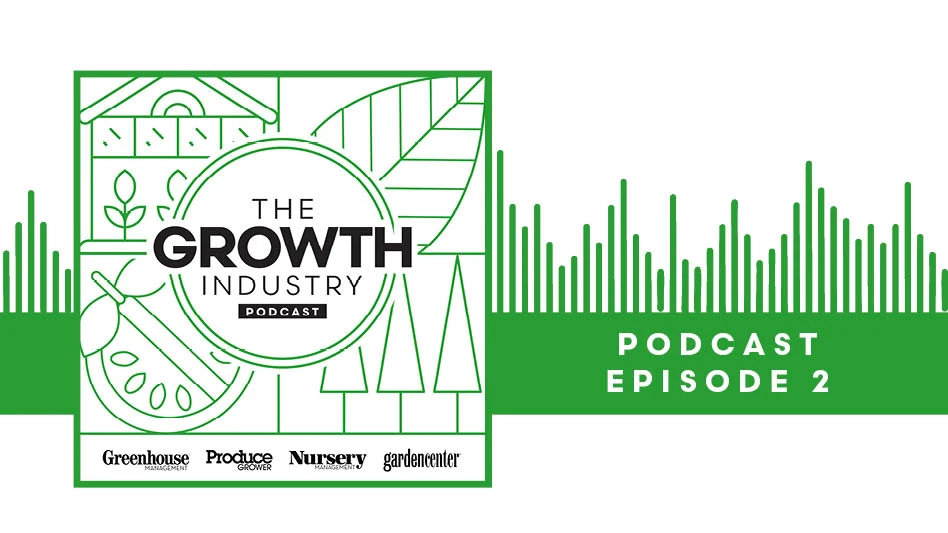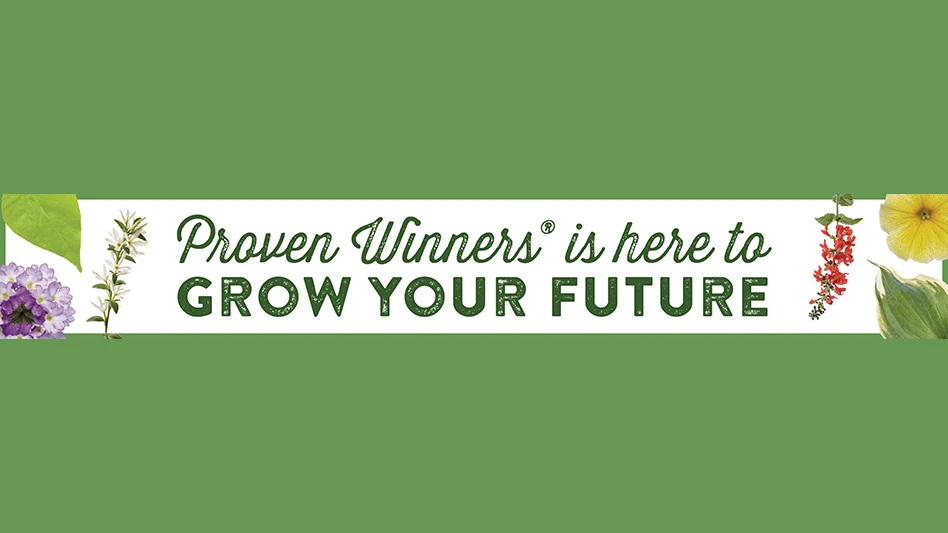

When a shopper stands at the front of a bench full of plants with a multitude of colors and textures, what’s going through their minds? Is it personal like looking for their favorite color? Is it random and something just caught their eye? Or is it deliberate because they need a birthday gift? While those scenarios are likely taking place at any giving garden retailer, a group of researchers have found that certain plant benefit messages influence consumer attitudes and their likelihood to buy.
This collaborative project used previous research and expanded it to establish a deeper understanding of the relationship between plant benefit perceptions, consumer behavior and demographic differences to help shape marketing strategies for plants. Breeders, growers and retailers can use this research to engage with consumers and capture more sales. The research was conducted by Melinda Knuth of North Carolina State University, Bridget Behe of Michigan State University, Alicia Rihn of the University of Tennessee and Charlie Hall of Texas A&M University.
The methodology
Consumers participated in an online survey in May and June of 2022. Subjects had to be at least 18 years old and have purchased a plant within the last 12 months. They were also required to tell the researchers what type of plant they purchased. Once those screener questions were met, they were allowed to take the survey.
Participants were shown eight plant benefit messages in conjunction with different prices ($9.99, $19.99 and $29.99), different availability of plants (commonly available, moderately available or rare) and different plant types (flowering plants, foliage herbs and succulents).
The messages were:
- Physical: Outdoor walks where plants grow lower blood pressure in adults and contribute to improved physical health.
- Emotional: Being near plants can provide a sense of relaxation and reduced stress.
- Cognitive: Being in the vicinity with plants can improve your concentration and memory.
- Aesthetic: Many plants create an artistic dimension to the home and garden, pleasing to the eye.
- Economic: Every $1 invested in the home landscape returns $1.09 to $1.15 to the homeowner.
- Social: Plants help create a comfortable environment where people can meet and socialize.
- Environmental: Plants provide numerous environmental benefits, including cleaning indoor air and outdoor pollinator habitats.
- Education: Engaging in plant activities can help people learn about scientific concepts, including plant growth and growing your own food.
“The point of all this is to see which benefit messages really resounded with consumers and how that message influences the way they evaluate plants and plant purchases,” Knuth explains. “And the most important ones for them were cognitive and education.”
Overall, the type of plant was the most important in the purchasing decision (36.4%), followed by price (35.1%) and availability (28.4%). Across the different benefit messages, all the groups exhibited the same order except the environmental group, which ranked price first, followed by plant type then availability.

Putting the research into practice
For the breeders and growers at the beginning of the supply chain, this information certainly provides priorities motivating consumers to purchase plants, but it also provides ways to help engage with consumers, she adds.
“What we’re discovering through data that we’ve collected is that consumers want to engage with growers. They want to engage with retailers. They want to engage with different parts of the supply chain,” Knuth says. “And we have found in multiple data sets that when consumers follow growers and other industry members specifically on social media, they’re much more likely to purchase from those growers or breeders and seek out their products. That’s been hard for us to quantify in the past, but we’ve discovered there’s close to a 50% correlation rate.”
Bottom line: don’t leave it up to the retailers to engage the consumer.
“Actively building loyalty with the consumer is invaluable,” Knuth adds. “While retailers can easily use the information from this study to create displays and point-of-purchase material, growers can use these benefit messages to help build loyalty through engagement whether it’s social media, advertising, messages on tags — whatever it may be.”
When asked about their willingness to pay — which did not correspond to the three price points — participants were willing to pay more for plants depending on the benefit message. For example, when looking at a photo of the same plant (in this case it was a 6-inch lavender), ones who viewed the cognitive message said they were willing to pay $21.67 for it, but those who saw the economic message said they were willing to pay $13.60.
“These are self-reported prices. We didn’t show them any dollar value when asked about their willingness to pay,” Knuth explains.


Other findings
The research also revealed other noteworthy preferences. Participants were more interested in plants that were commonly available versus moderately available or rare.
“We weren’t expecting that with all the houseplant craze still going on,” Knuth says. “We were expecting rare plants to really shine. But I think this demonstrates that most consumers want something that is accessible, something they can easily find with information about how to grow it. There’s still going to be a subset of people who are really into rare plants and they’re going to pay a lot of money for them, but that doesn’t mean we should cut out our bread-and-butter plants when it comes to selling and marketing.”
The survey also revealed that participants preferred flowering plants and foliage.
“It’s not that they don’t want to buy herbs and succulents, for instance. I think those categories have been so popular in the past that they’re more interested in flowers and foliage now,” Knuth says.
The research team also discovered there was a relationship between plant purchasing and positive mental health and more physical activity. That information was derived from the same data set, but will be reported in a separate paper, she explains.
“People said they were happier and had more optimism for the future when they purchased plants,” she says. “We know from past literature that people who live near green spaces or near a forest that their mental and physical health tend to be better. But now we can actually link this directly to their engagement with annuals, shrubs, trees and houseplants. They also report participating in more physical activities and having a better body image in conjunction with purchasing plants.”
That’s a clear message grounded in science that the industry can use to help market plants, she adds.

Explore the June 2023 Issue
Check out more from this issue and find your next story to read.
Latest from Greenhouse Management
- pH Helpers
- Society of American Florists accepting entries for 2025 Marketer of the Year Contest
- Sustainabloom launches Wholesale Nickel Program to support floriculture sustainability
- American Horticultural Society welcomes five new board members
- Color Orchids acquires Floricultura Pacific, becoming largest orchid supplier in U.S.
- American Floral Endowment establishes Demaree Family Floriculture Advancement Fund
- The Growth Industry Episode 3: Across the Pond with Neville Stein
- 2025 State of Annuals: Petal power








